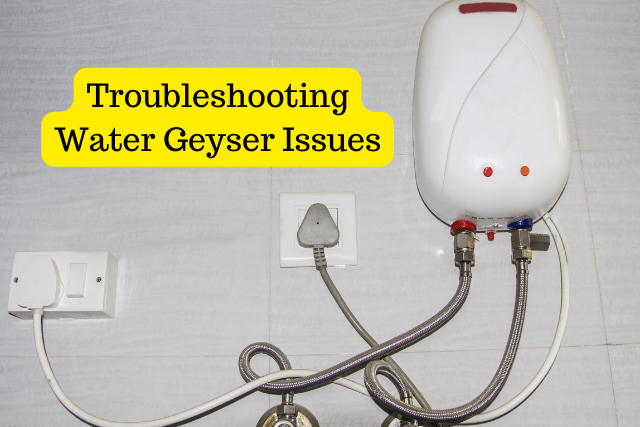You know what they say: “A clean home is a happy home.” But what happens when your trusty vacuum cleaner isn’t performing at its best?
Don’t worry; understanding vacuum suction and its quick fixes can save the day. From weak suction to clogged hoses, this discussion will equip you with the knowledge to tackle common vacuum problems head-on.
So, keep reading if you’re tired of lacklustre cleaning sessions and want to restore your vacuum’s powerful suction. There’s a world of quick fixes waiting for you.
Key Takeaways
- Proper vacuum suction is essential for effective cleaning and maintaining the vacuum’s lifespan.
- Signs of poor vacuum suction include reduced cleaning efficiency, weak suction power, and the need for multiple passes.
- Regularly checking and cleaning filters can improve suction.
- Unclogging the hose and brush roll and adjusting the height setting can also help improve suction and cleaning effectiveness.
Importance of Proper Vacuum Suction
To ensure the effectiveness of your vacuum cleaner, you must understand the importance of proper vacuum suction. You might be wondering why suction is so important.
Well, let me tell you. Proper vacuum suction is essential because it determines how well it can pick up dirt, dust, and debris from your floors and surfaces. Without adequate suction, your vacuum will struggle to remove dirt effectively, leaving a less-than-clean environment.
When your vacuum has strong suction, it creates a powerful airflow that lifts dirt from the surface into the vacuum’s dustbin or bag.
Every pass you make with your vacuum is more efficient and effective. On the other hand, if your vacuum has weak suction, it will leave behind dirt and debris, requiring you to go over the same spot multiple times.
Not only does proper suction improve cleaning performance, but it also helps to maintain your vacuum’s overall lifespan. When dirt and debris are efficiently sucked up, they don’t have the chance to clog or damage the internal components of your vacuum.
This means fewer breakdowns and repairs, saving you time and money in the long run.
Signs of Poor Vacuum Suction
If you notice these telltale signs, your vacuum suction may be lacking. Don’t worry, though; there are solutions to fix it. Here are some signs to watch out for:
Reduced Cleaning Efficiency:
- Your vacuum struggles to pick up dirt and debris, leaving behind a trail of crumbs or dust.
- Cleaning the same area as before takes longer, requiring multiple passes to achieve the desired results.
Weak Suction Power:
- The vacuum cleaner doesn’t create a strong suction force, making picking up larger particles or pet hair difficult.
- You can feel the lack of suction when you run your hand over the vacuum’s nozzle or hose.
These signs can be frustrating, but understanding them will help you address them. Various factors, such as clogged filters, a full dust bag, or a worn-out brush roll can cause poor vacuum suction.
Regularly maintaining and cleaning your vacuum can prevent these problems and ensure optimal suction power. Remember to check and clean your filters, empty the dust bag when it’s complete, and inspect the brush roll for any obstructions.
With a bit of care, your vacuum will regain its suction power, leaving your floors spotless and your cleaning routine hassle-free.
Quick Fix: Check and Clean the Filters
One simple and effective way to improve your vacuum suction is by regularly checking and cleaning the filters. Filters are crucial in trapping dust, dirt, and other particles, preventing them from clogging the vacuum and reducing suction power.
Over time, filters can become clogged with debris and lose their effectiveness, resulting in poor suction. By making it a habit to check and clean your vacuum filters, you can ensure optimal performance and maintain powerful suction.
Different types of filters commonly found in vacuums and their cleaning requirements:
| Filter Type | Cleaning Frequency | Cleaning Method |
|---|---|---|
| Foam Filters | Every 3 months | Rinse under running water and air dry thoroughly |
| HEPA Filters | Every 6 months | Tap gently to dislodge debris or replace if damaged |
| Pre-filters | Every 1 month | Brush or shake out debris |
| Carbon Filters | Every 6 months | Replace according to manufacturer’s instructions |
Quick Fix: Unclog the Hose and Brushroll
Now let’s address another quick fix to improve your vacuum suction: clearing any clogs in the hose and brushroll. When your hose or brush roll gets clogged, the suction power of your vacuum can be significantly reduced.
Luckily, unclogging them is a relatively simple process that you can do at home. Here’s what you need to do:
Clearing the Hose
- Start by removing the hose from the vacuum cleaner.
- Inspect the hose for any visible clogs or debris.
- Use a long, flexible object like a broom handle or a straightened wire hanger to gently push through the hose and dislodge any blockages.
- Alternatively, you can use a vacuum attachment with a narrow nozzle to suction out the clog.
- Once the clog is cleared, reattach the hose to the vacuum cleaner.
Cleaning the Brushroll
- Turn off and unplug your vacuum cleaner.
- Flip the vacuum over so you can access the brush roll.
- Use scissors or a seam ripper to carefully cut any tangled hair or fibres wrapped around the brush roll.
- Remove the debris from the brush roll using your hands or tweezers.
- Once the brush roll is clean, carefully place it back into the vacuum cleaner and secure it in place.
Quick Fix: Adjust the Height Setting
Adjusting the height setting is one quick fix to improve your vacuum suction. This simple adjustment can significantly affect how effectively your vacuum cleans your floors.
When the height setting is too high, the vacuum cleaner may not be able to create enough suction to pick up dirt and debris. On the other hand, if the height setting is too low, the vacuum cleaner may struggle to move across the surface and cannot pick up larger particles.
To find the correct height setting for your vacuum, turn off the machine and place it on a flat surface. Then, adjust the height setting to its highest position and gradually lower it until the vacuum cleaner glides smoothly across the floor without any resistance.
This ensures that the vacuum cleaner makes proper contact with the surface and creates optimal suction.
Quick Fix: Upgrade to a Higher-Powered Vacuum
Consider upgrading to a more powerful vacuum cleaner for a quick fix to improve your suction. Sometimes, the suction power of your current vacuum may not be strong enough to clean your space effectively.
By upgrading to a higher-powered vacuum, you can experience a significant improvement in suction and overall cleaning performance.
Why upgrading to a more powerful vacuum is worth considering:
Enhanced Suction Power:
- A higher-powered vacuum has a stronger motor and better airflow, allowing it to easily pick up more dirt and debris.
- It can tackle challenging tasks such as deep carpet cleaning or removing pet hair effortlessly, leaving your floors spotless.
Improved Filtration System:
- Many higher-powered vacuums have advanced filtration systems that capture even the tiniest particles, including allergens and dust mites.
- This ensures a thorough cleaning and helps maintain a healthier indoor environment, especially for those with allergies or respiratory issues.
Upgrading to a more powerful vacuum cleaner can be a game-changer in your cleaning routine. It provides you with the liberation of a cleaner, healthier space and saves you time and effort in the long run.
So, why settle for less when you can enjoy the benefits of a higher-powered vacuum?
Frequently Asked Questions
How Often Should I Clean the Filters in My Vacuum?
You should clean the filters in your vacuum regularly to maintain optimal suction. Neglecting to do so can result in reduced performance and clogged airflow. Make it a habit for a cleaner home!
Can I Use Any Cleaning Solution to Unclog the Hose and Brushroll?
You can’t use any cleaning solution to unclog the hose and brush roll. Using the recommended cleaning solution is essential to avoid damaging your vacuum. Follow the instructions in the manual for the best results.
What Should I Do if Adjusting the Height Setting Doesn’t Improve the Suction?
If adjusting the height setting doesn’t improve suction, check for clogs in the hose or brush roll. Clear any obstructions and make sure the airflow is unrestricted. If the problem persists, consult the user manual or contact customer support.
Are There Any Specific Brands or Models of Higher-Powered Vacuums That You Recommend?
If you’re looking for a higher-powered vacuum, there are many great brands and models to consider. Some popular options include Dyson, Shark, and Miele. Do your research to find the one that best suits your needs.
Is There a Way to Prevent Clogs From Happening in the First Place?
To prevent clogs from happening in the first place, make sure to clean the vacuum filters regularly and check for any obstructions in the hose or brush roll. This will keep the suction strong and efficient.
Conclusion
There you have it, a few quick fixes to common problems with vacuum suction. You can ensure your vacuum is functioning at its best by regularly checking and cleaning the filters, unclogging the hose and brush roll, adjusting the height setting, or even upgrading to a higher-powered vacuum.
Don’t let poor suction ruin your cleaning experience – take action and keep your floors spotless!







